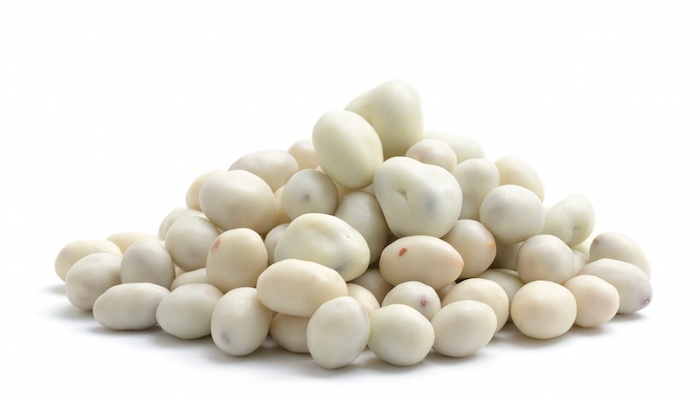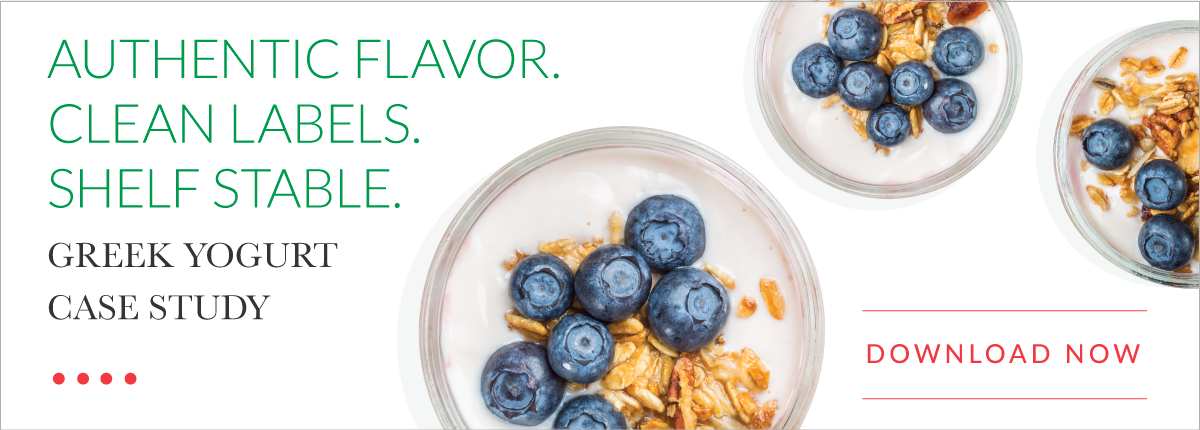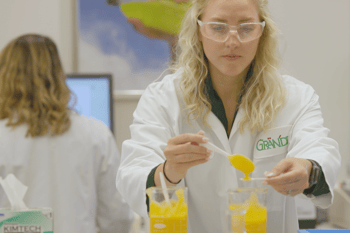 This blog post is a continuation of our series that answers questions we’re frequently asked by food and beverage manufacturers. Our goal with this series is to give manufacturers practical insights that help in developing successful formulations and end products.
This blog post is a continuation of our series that answers questions we’re frequently asked by food and beverage manufacturers. Our goal with this series is to give manufacturers practical insights that help in developing successful formulations and end products.
The questions we’re answering today relate to yogurt in formulations. Yogurt’s unique, tart flavor has been increasingly popular with consumers for the last two decades, and many are looking for ways to incorporate it into fresh and shelf-stable foods. But fresh yogurt presents some very real challenges; namely that its shelf life is relatively short and requires refrigeration, both of which add cost to an end product.
Those looking to avoid these issues and take advantage of yogurt’s “health halo” are looking to yogurt powders. Here are some questions and answers to help you understand dried yogurt as an alternative and its uses:
What are the important considerations when incorporating yogurt into a product?
If you intend to feature yogurt in your formulation you must consider the shelf life, processing and handing of fresh yogurt; to use fresh yogurt, a manufacturer must have refrigerated storage and processing facilities. For manufacturers wanting to add the unique flavor and health benefits of yogurt but don’t have the refrigerated storage or processing facilities needed to handle fresh yogurt, dried yogurt is a very practical option. Not only does dried yogurt have a much longer shelf life, it doesn’t require refrigeration or special processing lines.
Check out the “Dried Yogurt & Cultured Dairy Product Case Study” below to see how a food manufacturer used dried yogurt to formulate a shelf stable smoothie.
What are the restrictions around making a yogurt claim on a food or beverage label?
The U.S. Food and Drug Administration has a standard of identity for yogurt, though not one for yogurt powder; however, to be called yogurt powder the ingredient should be made from standard of identity yogurt (21 CFR 131.200, 203 or 206). Some common ingredient statements are “dehydrated yogurt,” “dried yogurt” and “nonfat yogurt powder.” When used in a product such as a smoothie, the standards of identity allow the product to be labeled as “made with yogurt” or “contains yogurt,” even if the yogurt is dried. However, when incorporating yogurt powder in a formulation, it must meet the standard of identity for yogurt before drying.
With Grande Primo® Dried Yogurt & Cultured Dairy Products – specifically, Grande Primo® Y100 – you’re able to label a product using this terminology: “Whey protein concentrate, skim milk, yogurt cultures, heat-treated after culturing.” This reflects the fact that dried yogurt does not contain live and active yogurt cultures (though it should be noted that dried yogurt still offers many of fresh yogurt’s health benefits). Y100 meets the Code of Federal Regulations (CFR) standard of identity of lowfat yogurt before spray drying.
What are some examples of dried yogurt in applications?
Yogurt powder has been successfully used to enhance the creaminess and flavor of salad dressings, snack/protein bars, smoothies, sweet snack mix and granola coatings, frozen desserts and fresh desserts. Each of our dried yogurt & Cultured Dairy Products features a slightly different flavor profile: Y45 has a tart, robust yogurt flavor; Y50 has a mildly tart, milky flavor, while Y100 has an authentic, tart, robust yogurt flavor. All three enhance the taste – and creamy texture – of the products to which they’re added.
[Please note that the information provided in this post regarding labeling is meant only as a general guideline for readers to understand the issues regarding using yogurt powders. We are not responsible for the labeling of food or beverage manufacturers’ products.]
If you are considering adding dried yogurt into your food or beverage application don’t hesitate to reach out to our knowledgeable team of Food Scientists. They would be happy to consult with you on your formulation challenge.


.webp?width=350&height=235&name=Blog_Label-900x600%20(1).webp)


